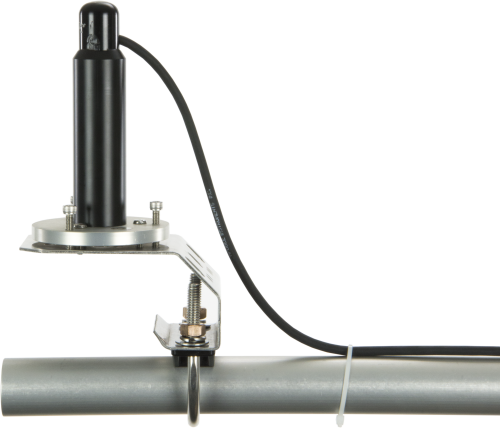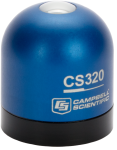This product is not available for new orders. We recommend ordering: SP230SS.

| Services Available |
|---|
Visão Geral
The SP230-L pyranometer, manufactured by Apogee, includes a 0.18 W internal heater and an elevated base that allow it to provide solar radiation measurements during the most severe weather. Its small heater draws just 15 mA of current, allowing it to be powered by a small solar panel and battery─even on days with a short duration of daylight and at high latitudes (far away from the equator).
Note: In the image, the SP230-L is shown mounted to a 18356 Leveling Base and a CM225 Solar Sensor Mounting Stand.
Leia maisBenefícios e Características
- Designed to prevent snow, frost, and dew accumulation
- Heater uses 1/80th of the power that other heated pyranometers use, making it ideal for remote battery-powered applications
- Measurement waveband of 360 to 1120 nm
- Compatible with most Campbell Scientific data loggers
- Dome-shaped head prevents water from accumulating on the sensor head
imagens




Produtos Relacionados
Descrição Técnica
The SP230-L uses a silicon photovoltaic detector mounted in a cosine-corrected head to provide solar radiation measurements. It is calibrated against a Kipp & Zonen CM21 thermopile pyranometer to accurately measure sun plus sky radiation for the spectral range of 360 to 1120 nm. The SP230-L outputs a millivolt signal that Campbell Scientific data loggers can measure.
Note: Sensors calibrated to the 360 to 1120 nm spectral range should not be used under vegetation or artificial lights.
Compatibilidade
Mounting
Accurate measurements require the sensor to be leveled using a 18356 leveling fixture. This leveling fixture incorporates a bubble level and three adjusting screws. The 18356 mounts to a crossarm using the CM225 mounting stand. The SP230 should be mounted away from all obstructions and reflective surfaces that might adversely affect the measurement.
Especificações
| Light Spectrum Waveband | 360 to 1120 nm (wavelengths where response is 10% of maximum) |
| Measurement Range | 0 to 1750 W/m2 (full sunlight ≈1000 W/m2) |
| Heater | 780 Ω, 15.4 mA current drain, 185 mW power at 12 Vdc |
| Absolute Accuracy | ±5% for daily total radiation |
| Sensitivity | (0.2 mV/W/m2) |
| Calibration Factor | 5 W/m2/mV |
| Cosine Response | ±5% at 75° zenith angle; ±1% at 45° zenith angle |
| Temperature Response | -0.04 ±0.04% per °C |
| Long-Term Stability | < 2% per year |
| Operating Temperature Range | -40° to +70°C |
| Relative Humidity Range | 0 to 100% |
| Diameter | 3.15 cm (1.24 in.) |
| Height | 12.75 cm (5.02 in.) |
| Weight | 142.0 g (5.01 oz) with 2 m (6.56 ft) cable |
Documentos Relacionados
Lâminas do produto
Perguntas Frequentes Relacionadas
Number of FAQs related to SP230-L: 1
-
Because of the loss of IR radiation, nearly all thermopile instruments typically have a negative offset. This offset is most easily visible at night-time, when a small negative value is read instead of zero. This same offset is present during the daytime, but it is not as visible because of the large solar signal.
Another common issue involves leveling an instrument. Leveling a thermopile instrument can cause errors in the direct beam component because the cosine response is not correct. These errors are more notable when the sun is close to the horizon because the angle is so shallow.

